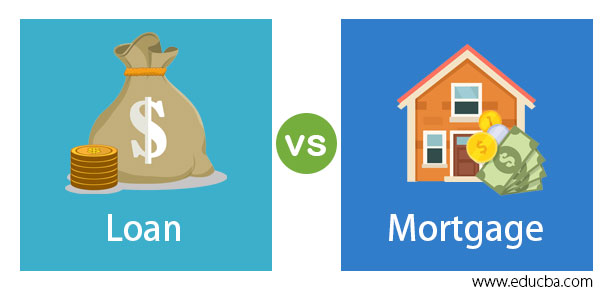Conventional Mortgage Loans: Just How They Compare to Other Lending Options
Conventional Mortgage Loans: Just How They Compare to Other Lending Options
Blog Article
The Important Elements to Think About When Choosing In Between Fixed-Rate and Variable-rate Mortgage Financings
When examining mortgage alternatives, borrowers face a pivotal choice in between fixed-rate and adjustable-rate loans, each providing potential risks and unique benefits. Key considerations such as rates of interest stability, predictability in monthly settlements, and the effects of possible rate adjustments can dramatically impact long-lasting economic health. Recognizing the expected period of homeownership and the overall expense of borrowing can form one's strategy. As these elements link with individual monetary situations and risk tolerance, the implications of this selection might not be as straightforward as they seem. What nuances should be focused on in this important decision-making procedure?
Rates Of Interest Security
When selecting a home loan, comprehending rates of interest security is vital for informed decision-making. Interest prices can substantially influence the general cost of a home mortgage, and recognizing the nature of these rates is crucial for consumers. Fixed-rate mortgages use the benefit of consistent month-to-month payments over the life of the lending, protecting customers from market changes. This security enables property owners to intend their funds with better assurance, as they will not be impacted by rising rates of interest.
On the other hand, variable-rate mortgages (ARMs) start with reduced preliminary prices that may transform regularly based upon market conditions. While this can lead to lower settlements at first, it also presents unpredictability, as customers may deal with increased settlements if rates of interest increase. For those considering an ARM, it is crucial to assess the probability of price adjustments, the potential for payment boosts, and the size of the initial fixed-rate period.
Eventually, the option in between adjustable-rate and fixed-rate mortgages rests on specific threat tolerance and monetary situations. Comprehending rates of interest security helps debtors make educated decisions that line up with their lasting economic objectives.
Month-to-month Repayment Predictability
While consumers commonly prioritize rates of interest stability, the predictability of regular monthly repayments is equally essential in the home loan choice procedure (Conventional mortgage loans). Regular monthly settlement predictability plays an essential function in budgeting and financial planning, as it straight impacts a property owner's cash money circulation and overall economic health
Fixed-rate mortgages supply a regular monthly repayment throughout the life of the funding, allowing consumers to anticipate and plan their costs efficiently. This security can be especially advantageous for newbie buyers or those on a set income, as it eliminates the unpredictability connected with rising and fall settlements.
Alternatively, adjustable-rate home mortgages (ARMs) generally include reduced preliminary payments that can alter in time, resulting in potential variability in regular monthly obligations. While at first appealing, this changability can complicate economic planning, especially if consumers do not account for future price adjustments.
Prospective Price Modifications
In the world of adjustable-rate mortgages (ARMs), prospective rate adjustments stand for a considerable variable that borrowers must meticulously think about. Unlike fixed-rate mortgages, where the rate of interest price stays the same for the life of the car loan, ARMs are defined by changing rates of interest that are connected to market indices. This irregularity can cause significant changes in regular monthly repayments, affecting the customer's financial planning and budgeting.
Consumers should be conscious of the margin and index used to compute these modifications, as they straight influence future interest prices. Additionally, ARMs frequently include caps that restrict exactly how resource much the passion rate can increase at each change and over the life of the car loan, which can offer some level of defense against extreme price hikes.
Comprehending these potential changes is vital for customers, as they directly affect long-term repayment commitments. As a result, evaluating personal financial circumstances and take the chance of tolerance is important when making a decision whether an ARM aligns with one's monetary objectives.
Finance Term Factors To Consider
Funding term factors to consider play an essential duty in the decision-making process for see page consumers choosing in between fixed-rate and adjustable-rate home loans. The length of the financing term considerably impacts monthly payments, passion prices, and general monetary planning.

Inevitably, consumers need to analyze their individual situations, monetary goals, and market problems when evaluating the implications of finance term choices within each home mortgage type.

Total Price of Borrowing
The total expense of borrowing is a crucial factor that can significantly affect a customer's choice between fixed-rate and adjustable-rate home mortgages. Fixed-rate home loans offer foreseeable month-to-month repayments, as the rate of interest stays consistent throughout the finance term. This predictability can lead to lower overall costs, especially in a steady or decreasing interest price atmosphere. Debtors can spending plan successfully, recognizing their repayments will not fluctuate.
Conversely, adjustable-rate mortgages (ARMs) generally begin with reduced first prices, resulting in reduced ahead of time prices. These prices can enhance after a preliminary period, leading to potentially higher long-term prices. Customers must take into consideration the regularity and level of original site rate changes, along with the total car loan duration, to accurately analyze the economic implications.
Moreover, the total expense of loaning includes not only rate of interest but also costs and various other linked prices, such as closing costs and insurance (Conventional mortgage loans). When assessing mortgage choices, borrowers need to carry out an extensive cost evaluation over the life of the finance. By doing so, they can make an informed choice that lines up with their economic goals and risk tolerance
Conclusion
To conclude, picking between fixed-rate and adjustable-rate mortgage necessitates mindful factor to consider of several important elements. Rate of interest security and monthly settlement predictability are critical for efficient budgeting, while the potential for price changes in ARMs presents economic uncertainty. Furthermore, the awaited period of homeownership and the overall price of loaning, consisting of rates of interest and associated costs, should line up with private financial circumstances and risk tolerance. Such a detailed evaluation will facilitate enlightened decision-making in mortgage option.
Key factors to consider such as passion price stability, predictability in monthly settlements, and the ramifications of prospective price modifications can significantly influence lasting financial wellness. Rate of interest prices can significantly impact the general price of a home loan, and identifying the nature of these rates is important for customers. Unlike fixed-rate home loans, where the rate of interest rate remains unmodified for the life of the loan, ARMs are defined by rising and fall rate of interest prices that are linked to market indices. Furthermore, ARMs frequently consist of caps that restrict just how much the interest price can increase at each change and over the life of the finance, which can supply some level of defense against radical rate hikes.
Rate of interest price security and month-to-month settlement predictability are extremely important for reliable budgeting, while the potential for rate changes in ARMs presents economic uncertainty.
Report this page